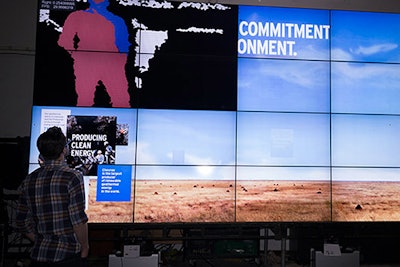
Wi-Fi, sensors, radio-frequency identification, and other technologies are creating new opportunities for planners to track and respond to attendee behavior at events such as trade shows and conventions. Control Group is a technology firm that has worked with clients such as Chevron and Mercedes-Benz Fashion Week to design interactive, data-driven experiences.
“The opportunity to do something at an event that is extremely original, distinctive, and that is also sensitive and not overpowering is more available now than it has ever been. That is due to the emergence and consumerization of some really great sensing and communication technology,” said Control Group C.E.O. Campbell Hyers. “Your competition is not just other events and other booths. Your competition is hotels, cruise lines, retail stores, the home—places people are being wowed all the time by what we call magic.”
Hyers shared three examples of attendee tracking and how it can be used to enhance user experience at an event:
1. Tracking movement throughout a large space, such as a convention hall.
Control Group demonstrated this capability at the O’Reilly Where Conference in April. The company built a Wi-Fi network to capture real-time location patterns of attendees through their Wi-Fi-enabled devices. The data indicated the types and concentration of devices in the room at any given moment, for example indicating the booths that attracted the most people. “The purpose was to allow people at that conference who are interested in proximity marketing and intelligence to have a conversation about what it means to have that sort of information,” said Hyers. This type of tracking can also be used to make the space and signage react differently based on a person’s movement. “If I am returning to a space that [has], let’s say a display screen, it would be good if you didn’t repeat what I had previously experienced. There’s knowledge that can be gained from knowing you have a returning person. For example, to let the booth manager know, ‘Hey somebody is here for a second time. You should seek them out,’” said Hyers.
2. Tracking what a person does in a particular location, such as within a booth.
At the World Petroleum Conference in Qatar last December, Control Group created a 12- by 80-foot interactive display wall for Chevron. “Rather than creating a whole bunch of touch-screen interfaces—honestly, I think there is too much of that in the industry—there was an infrared sensor that could detect when [attendees] were walking and when they stopped. And when they stopped, materials start to present themselves on the screen. If the person leans forward to the screen, the material further unveils itself. [It's] almost turning your body into the point-and-click device,” said Hyers. The technology is transparent to the attendees, which is the most effective way to use it. “Do not try to make someone learn a new interface to interact with your communications effort. Allow them to do the most natural thing they do in order to get access to your message or product,” said Hyers.
3. Tracking what a person does in more detail within a booth or display.
Sensors can provide data on what people are touching and holding, and that data can trigger the type of information presented within that display. “For example, it’s a vacuum cleaner [display]. If you see a lot of people are giving it a subtle shake to check its weight, you learn a little bit about the sales process. That is an opportunity to pull something up on the screen that provides more information about weight,” said Hyers.
Hyers stressed that these are just three examples. Tracking and motion-sensor systems are constantly evolving and therefore planners should “forget about what the technology can do. Instead figure out what you need to do. Then turn to a deep set of resources to achieve your ambition,” he said. The overall goal when integrating this type of technology into an event should be to provide a service not just a stunt. “Your event can provide an exchange where people can leverage some of these interactive technologies to learn and experience something new versus just having some crazy effect on a screen that looks cool and makes people feel silly. There’s a distinction there. Try to create an interaction that provides value to both parties,” he said.
Tracking systems can raise concerns about privacy, and these solutions can be developed with or without opt-in parameters, depending on the needs of the event. “Privacy is different for every audience. The way you need to reflect your consideration of privacy at a legal conference may be much different than at a gaming conference. Your products are successful because you have insight into your audience. It’s incumbent upon you to know, as Facebook calls it, where the ‘creepy’ line is and to work around that,” said Hyers.



















